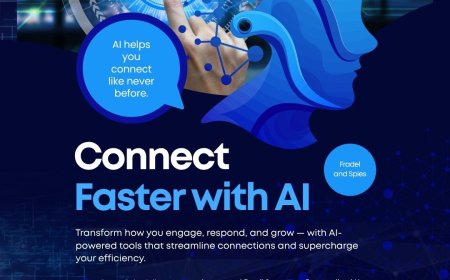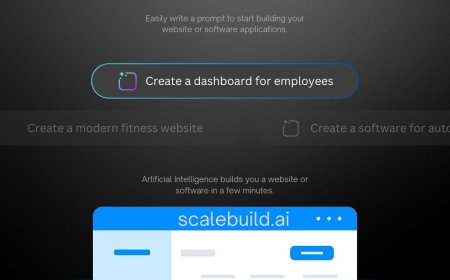How ReactJS Web Development Is Shaping the Modern Web
Read this blog to learn how ReactJS transforms web development with Virtual DOM, JSX, components, and emerging features like Server Components.

ReactJS is the leading JavaScript library for creating dynamic, high-performance web apps. Developers worldwide choose it. Why? This powerful library helps them create dynamic user interfaces quickly. Traditional updates to the web page (the DOM) are slow. React fixes the issue with a Virtual DOM. This makes UI changes efficient.
But ReactJS offers more. Its key strength is component-based architecture. Developers build interfaces using simple, reusable building blocks. This makes the code organized and easy to maintain. ReactJS has a huge support ecosystem, too. Major companies have adopted React widely, which shows its reliability.
Why ReactJS Became the First Choice of Developers
ReactJS was created in 2011 when Facebook needed to solve complex user interface challenges. It was first used in Facebooks newsfeed and later adopted by Instagram. A few months later, ReactJS became open-source. This marked a big moment for web development. The library provides many essential features that simplify development.
1. JSX for Cleaner Code
JSX (JavaScript XML) is a unique feature of ReactJS. It is a syntax extension that lets developers write code similar to HTML inside JavaScript. Traditional methods keep markup and logic in separate files. React combines them into loosely coupled units called components. This brings many benefits.
JSX gives developers a cleaner, more concise syntax. There is less boilerplate code, so the components become more readable. Using JSX, developers can utilize the features of JavaScript while keeping a familiar HTML-like structure. The extension thus makes ReactJS web development effortless.
2. Virtual DOM
Virtual DOM (Document Object Model) is another essential feature. It is a lightweight copy of the actual DOM that allows efficient UI updates. When there is an update in the application, React compares the new Virtual DOM with the previous version of the actual DOM. This identifies the minimal changes needed. React then batches these updates to the real DOM. This results in faster updates in the UI. It also reduces development overheads.
3. Unidirectional Data Flow
React has a unidirectional data flow architecture. Data flows one way from parent to child components. This kind of architecture simplifies handling and organizing data.
The design also makes debugging easier. This is because developers know where the data is coming from and where its going. They are able to spot problems much faster. This reduces errors and keeps developers in control of their data.
4. Reusable Components
The scalability of ReactJS comes from its component-based architecture. These components are independent building blocks that can be reused throughout the development cycle. This saves time and effort. These self-contained pieces of code keep the codebase manageable as the application grows.
This modular design helps with:
-
Better Maintainability: Development teams dont need to go through a large codebase to find errors. They focus solely on the components responsible for the issue.
-
Faster Development: Developers can work on different parts of an application in parallel since every component is independent of the other. This shortens the ReactJS app development cycle.
-
Improved Adaptability: It is possible to modify any functionality without rewriting large blocks of code.
5. Easy Debugging
ReactJS provides many tools for testing components. These tools allow a ReactJS development company to detect potential issues early.
React offers unit testing that helps verify if individual components function correctly. Developers can use asynchronous testing tools from libraries like Jest to test API calls. This makes sure components are able to handle external data correctly.
Browser extensions like React Developer Tools also support debugging. The extension allows users to view component hierarchies. This way, they can understand an applications structure and find issues easily. The platform has a separate tab for finding and managing warnings within an application.
6. Easy Integration with Backend Systems
ReactJS can be used along with Node.js to create full-stack applications. Developers can code using JavaScript throughout their entire application stack. This greatly simplifies the development process. The combination is used for building many real-time applications with responsive user interfaces.
ReactJS doesnt restrict teams to a single backend choice. It works well with Django, Laravel, Spring Boot, and Firebase too. This flexibility allows developers to choose a framework that matches their project needs.
7. Server-Side Rendering
Server-side rendering (SSR) helps address challenges with an applications performance. Pages are rendered on the server and then sent to the user. This reduces the initial load time of an application. It also helps users with a slow internet connection.
The React ecosystem offers several frameworks for server-side rendering:
-
Next.js with its hybrid rendering model
-
Astro for content-heavy websites
-
Remix with server-rendered workflows
React Server Components are also beneficial. These components render entirely on the server, so client-side rendering is not required. They can change how we build high-performance web applications.
What the Future Holds for ReactJS
ReactJS keeps evolving with new features that will change how we build web applications.
1. Emerging Features: Server Components, Suspense
React Server Components mark a big change in how components work. They run only on the server, and their code never reaches the client. Because large components are not sent to the client, the bundle size is reduced. This improves performance to a considerable degree.
Suspense works along with Server Components to handle loading states smoothly. It allows temporary fallback content to be shown to the users while components load data. This creates a smooth user experience. React 18 made Suspense work with data-fetching libraries that enable faster page loads through HTML streaming.
2. React's Role in AI and IoT Interfaces
The integration of ReactJS and AI creates new possibilities. Today, developers can add features to improve customer experience. They can integrate OpenAI GPT to enable smart conversations, TensorFlow.js for browser-based machine learning, and NLP features for voice commands.
IoT presents interesting opportunities, too.
React's component architecture fits well with the interfaces of IoT devices. Sensors can update component states when they receive new data readings. React may not suit massive IoT projects. However, it works well in smaller applications where responsive UIs matter the most.
3. Influence on Other Frameworks and Tools
React's features continue to impact the broader development world. The component-based approach that React pioneered now appears in many other frameworks. React's rendering features have pushed competing libraries to adopt similar ideas. The React team's work on Server Components and Suspense will spawn new ideas across the JavaScript ecosystem.
Conclusion
ReactJS has transformed how web applications are built. The component-based approach, Virtual DOM, and data flow patterns give developers solid tools for creating responsive interfaces. JSX syntax makes the development process more intuitive by bringing HTML-like code into JavaScript.
The future looks bright. Server Components and Suspense will change how applications load and render data. Its growing role in AI interfaces and IoT applications will have important implications for the development world.
ReactJS web development remains a smart choice for projects of any size. Companies that choose ReactJS development outsourcing can build better interfaces while keeping their budget in check.
































